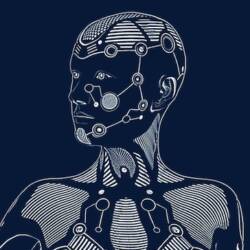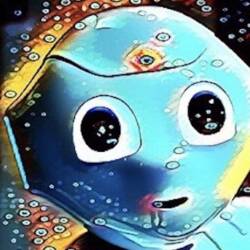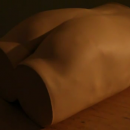Margaret Atwood’s The Heart Goes Last: Love, Dystopia and Sex Robots
The Canadian writer explores a crumbled world stumbling forward.
 |
The age of want. The desire of need. The insatiable lust for more and more and more. It is easy to look at contemporary times and see nothing but a fetishistic craving for “the material.” Our world is littered with the debris of consumerism and an unending parade of buy, have, possess. Upgrade that phone. Wear this latest fashion. Own the newest gadget. New and improved. These are the proverbs so many live by.
But what if they were taken all away? What if our world crumbled and possessions became irrelevant, rendered meaningless behind the search for food, shelter, and survival—and even sex? You know, the way it used to be? What if the one true need isn’t the latest technology, but rather the love of another?
And then what happens if the cycle repeats itself and love is is no longer enough?
Margaret Atwood, Canadian master of dystopian dreamlands, has crafted a near future in her latest novel The Heart Goes Last—one that pierces an arrow through the heart of relationships, exposing the nervy testament that appearances can deceive. Combining sly and absorbing humour, Atwood tells the tale of a couple who are down on their luck after a significant financial crisis cripples the northeastern portion of North America—and what they will subject themselves to for the so-called better life.
Stan and Charmaine have lost everything. Their jobs, their home, their future. To survive, they navigate a dangerous city living in their car and sustain themselves on Charmaine’s job in a dive bar. In order to save themselves and their seemingly unshakeable love, they must sell themselves to a new model of work—a potential labor and living nirvana.
That may seem an oxymoron, but it is the ideal behind the Positron Project and the town of Consilience. A revolutionary idea meant to reinvigorate local industry and engage an idle workforce, the project offers those down-on-their-luck a job and a place to live—at a price. The offer is a comfortable, pleasant life in exchange for voluntary commitment to the prison industrial complex. People selected for the program rotate between living one month in suburban bliss and one month incarcerated—the logic being everybody always has work and society improves through expanded industry, including new technologies and medical breakthroughs.
But we know there must be a short circuit. There must be a catch.
In characteristic Atwood masterstrokes, the world of despair and dependence are depicted through bleak landscapes and desperate characters. Stan and Charmaine seem to be making a good decision, but it is soon clear that they’ve betrayed more than just their natures.
This might give the impression that The Heart Goes Last is a tortured account of a couple’s disintegration, but that is not the heart of the novel. Sure, Stan and Charmaine struggle in the world and with each other, but this world, while remarkably similar to our own, is a world where some technologies have advanced past our own. Their tracking technology is superb. Their facial recognition software is dead or alive accurate. Their neurological capabilities are beyond our imagination.
And they have sex robots!
Long the holy grail of hormones, the hope for sexy cyborgs is getting closer for us, but in this world, production is in full swing on anatomically-gifted androids. Orders are coming in from around the world (the areas where the economy didn’t collapse) requesting both generic and very specific models of sex robots.
And it is in this discussion that Atwood is both coy and specific. The robots are described as having differing abilities according to price. You can get models that are basic, glorified Fleshlights and high-end models that can simulate breathing. These robots sound awesome!
But Atwood doesn’t leave these creations as just fantasy dolls ready to service. She brings into the discussion the same ethical dilemmas we are currently struggling with when it comes to sex robots. Sure, it might be fun to have your own Elvis Presley and Marilyn Monroe, but should there be limits on what or who sex robots might mimic? Is it okay to design these toys to resemble underage people? Is it ethical to model them after living, breathing humans—without consent? Is it possible this technology could go too far and move into realms that could slip out of reasonable ethical and moral control?
Again, it sounds like The Heart Goes Last might be some kind of morality play—and dreadfully morose. But trust that all of this plays out within a madcap adventure involving cultural touchstones and figures you would not expect to inhabit a crumbling capitalist nightmare. The key here is integrating the social commentary with the device of that propels that confluence.
Sex robots are not a huge part of the book, but they do serve as a discussion point on what relationships could become. If we think we’re ready to establish physical intimacy with non-sentient beings and more, perhaps we’re moving away from a key part of our humanity. The parts of the body that respond to sexual stimuli might be leading the rest of the body down a difficult path. Sexual impulse may replace our essential pulse.
Maybe the heart does go last.
Image source: Amazon
Leave a reply
You must be logged in to post a comment.

















